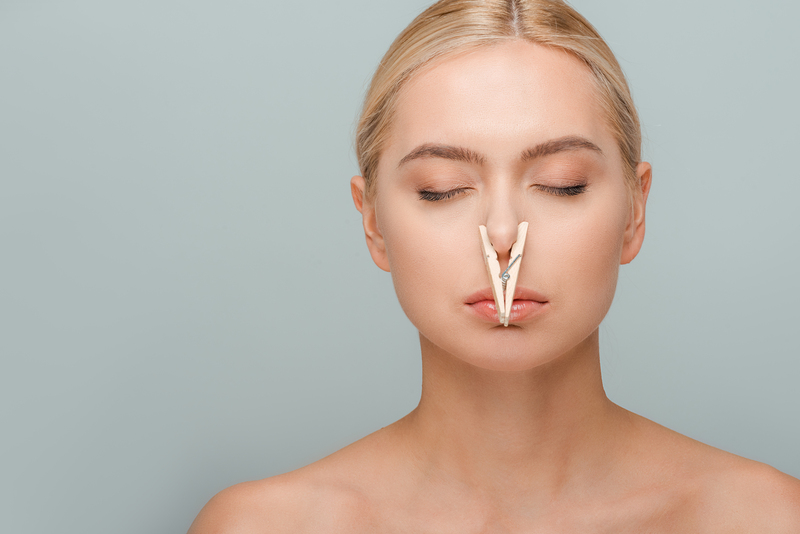Turbinates are bony structures inside our noses. What causes these structures to get swollen usually is allergies such as rhinitis, cold, and sinus infection, among other more uncommon causes. This is a health condition that can be very annoying and cause problems in daily life while driving, for example. The treatment with acupuncture for swollen turbinates is an effective option to alleviate turbinate hypertrophy.
While the treatment with acupuncture for swollen turbinates is effective if done by a qualified professional, the self-treatment with acupressure should be done with caution. In the first place, it is important to define what is the exact physiopathological mechanism causing the soft tissues inside the nasal passages to become swollen.
What are the common symptoms of turbinate hypertrophy, and can you know that you’re suffering from it?
- You’re having difficulty breathing
- You have a congested nose
- Your nose feels as if it’s stuffed and/or blocked
- Your breath is noisy
- You breathe through your mouth while sleeping
- You’re noticing a frequent runny nose
In case you are suffering from these symptoms, have a look at our article about acupressure for sinus infection as well.
Can Acupuncture Help With Swollen Turbinates?
In traditional Chinese medicine, the nose is considered a part of the functional sphere of the Lungs since it’s involved in the air passage and reception of Qi from the environment. Any problem with the nose in TCM needs to be addressed together with its concomitant symptoms.
That being said, there are some randomized trial-type studies showing the benefit of acupuncture in the treatment of seasonal allergic rhinitis and a very important randomized controlled study published in Nature scientific journal, one of the most prestigious journals of science. In the latter, scientists were able to show how acupuncture for swollen turbinates can significantly improve nasal ventilation and nasal patency.
The difficulty in breathing is the primary symptom of turbinate hypertrophy. It is very inconvenient and can be an obstacle that hinders activities like exercising, driving, working, and doing normal tasks in everyday life. Acupuncture treatment is shown to be effective in stimulating the autonomic nervous system and regulating it, improving the quality of life of patients with nasal congestion due to inflammatory diseases.
What You Can Do To Avoid Having Seasonal Allergies

In case you are prone to having allergic reactions to pollen, dust, and the like, there are some precautions you can take in addition to doing the treatment with acupressure. The first step is to avoid the things you’re allergic to. For example, if you’re allergic to pollen, you can wear wrap-around glasses and a face mask during spring, wash your bedding regularly at 60C minimum, and keep the house clean and well ventilated.
Another important measure to have in consideration while dealing with turbinate hypertrophy caused by seasonal allergy is that the symptoms of allergy, the stuffy nose, the itchiness, and the cold-like symptoms are caused by histamine. Histamines are chemicals that our immune systems make to get rid of potentially harmful substances.
Fermented foods like wine, beer, shoyu, dry meats, and so forth are rich in histamine, as well as leftover foods that we live overnight in the fridge. In case you’re prone to allergies, you should avoid consuming fermented foods in order to lower the levels of histamine in your body and reduce the inflammatory responses of your immune system.
We also recommend you do the acupressure for stuffy nose protocol.
Acupressure Points That Treat Swollen Turbinates
The points used in acupressure are the same as the ones used in acupuncture for swollen turbinates. The stimulation of these acupoints is aimed at releasing the nasal cavity from the excessive mucus and helping the tissue to return to its normal condition.
In order for the acupressure treatment to be effective, you need to be consistent with the procedure and keep it up for a couple of months to be able to feel the full benefits of this wonderful practice. We encourage you to take it to heart and do it to the best of your abilities.
Acupoint: Bl-1 (Other Names: Urinary Bladder-1/Jing Ming/Bright Eyes)
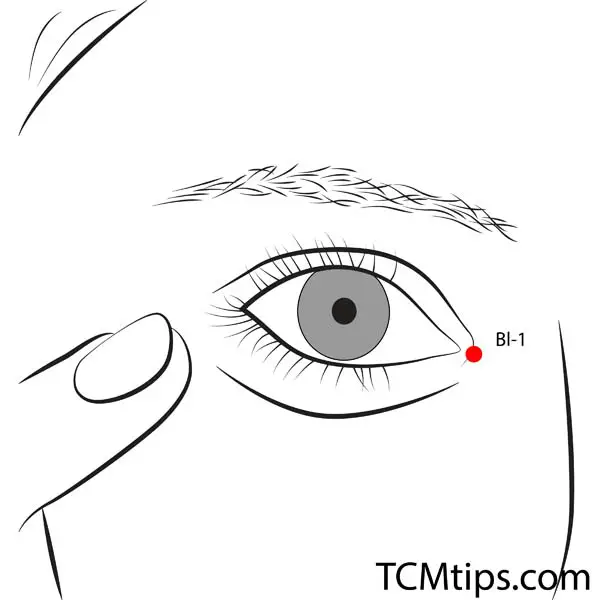
Jingming, as this acupoint is also called, is a very particular point. In this acupoint, the Bladder channel with the Small Intestine, Stomach, Gall Bladder, San Jiao, DU, Yin Qiao, and Yang Qiao channels all meet. It’s one of the acupressure points for cataracts.
Find Bl-1 in the inner corner of both your eyes. The stimulation at this point must be done carefully and apply short-amplitude movements. You can press both sides at the same time and massage them with slight round movements for about three minutes. It is said that acupressure at this point improves the passage of the nose and enhances the function of the nasal mucosa.
Acupoint: Bl-10 (Other Names: Urinary Bladder-10/Tian Zhu/Celestial Pillar)
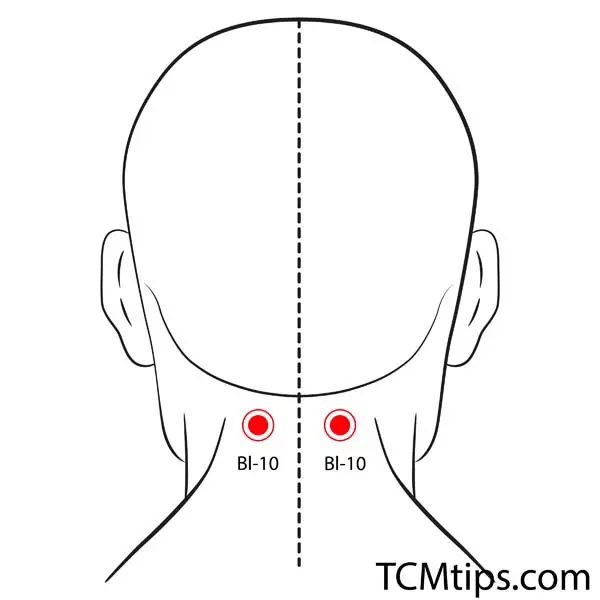
This point is located in the indentations around the hairline on both sides of the upper part of the neck muscles.
This is one of the most important acupoints to treat occipital and vertical headaches. It is effective to relieve nasal congestion and loss of the sense of smell as well as asthma and dyspnea. You can massage this acupoint with your fingers with circular movements for a couple of turns of 10 seconds each.
You can find this point among the acupressure points for neck pain and headaches as well.
Acupoint: GB-20 (Other Names: Gallbladder-20/Feng Chi/Wind Pool)
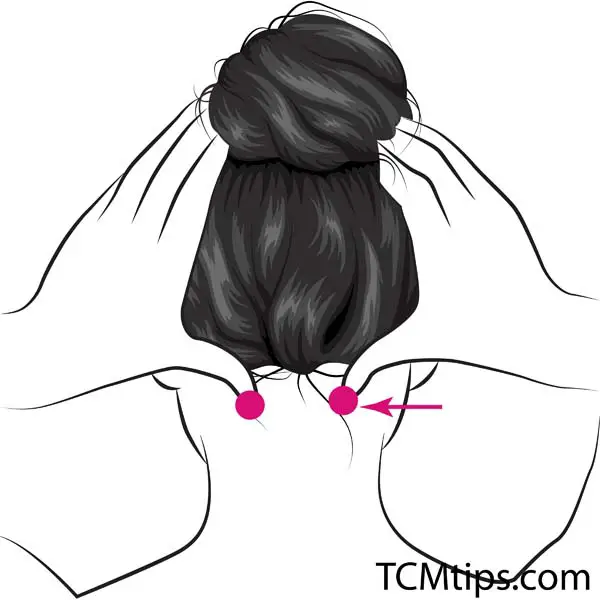
It is located in the hollow between the sternocleidomastoid and trapezius muscles, close to the base of the skull. Normally the exact location is at the most tender point of the hollow.
This is one of the outstanding points that treat all diseases of the head, brain, and sensory organs. It’s an effective acupoint used to treat rhinitis and rhinorrhoea. It is one of the acupressure points for watery eyes.
Massage both GB-20 points with a gentle circular motion, using light to moderate pressure for a couple of turns of 10 seconds each.
Acupoint: GV-20 (Other Names: The Governing Vessel-20/Bai Hui/Hundred Convergence)
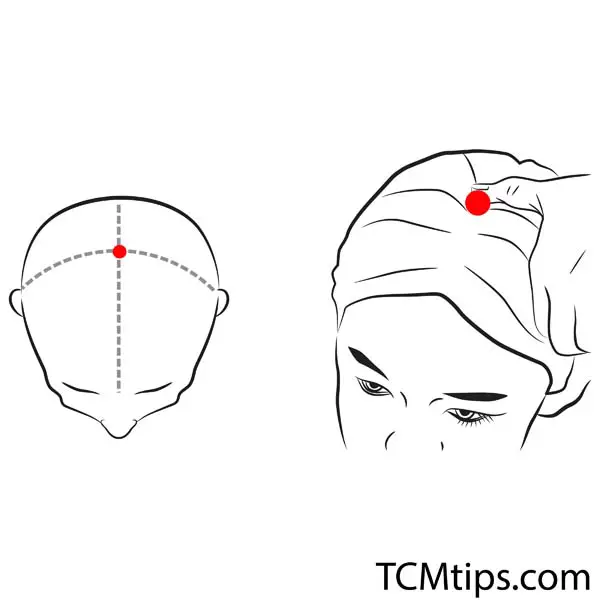
Baihui can be found on the midline of the head by drawing a straight line from both ears up. This acupoint is very important since it is the meeting point of the Yang meridians.
GV-20 regulates the functioning of the autonomic nervous system and improves homeostasis and nasal symptoms. GV-20 stabilizes the ascending Yang, promoting the proper functioning of the Yin/Yang balance and benefitting the head and sensory organs. This is also one of the acupressure points for eye infection.
Massage this acupoint with your index finger, doing a steady and gradual massage for a minute, then take a break and repeat for two more turns.
Acupoint: Ren-22 (Other Names: The Conception Vessel-22/Tian Tu/Heaven Projection)
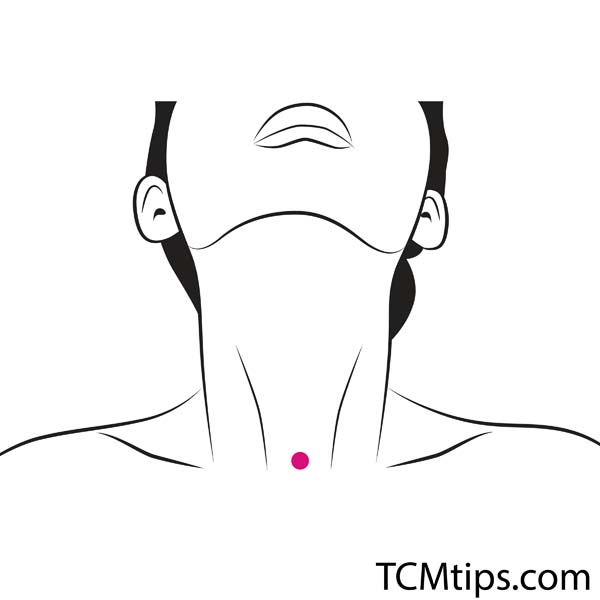
This point is located right in the center of the supraclavicular fossa.
Ren-22 is an acupoint closely related to the lungs, and in Chinese medicine, nasal diseases are related to the Lungs, and using this acupoint improves the symptoms derived from the Lungs. This acupoint can be found among the acupressure points for throat inflammation as well.
Be very careful to stimulate this point. You can use your thumbs to exert a slight pressure for a few seconds and release. Repeat this procedure five to seven times.

Try our Anti-Aging Gua Sha Tool designed to bring out your skin’s natural glow.
Best Gua Sha Product- Anti-Aging: The tool is designed to target 11 specific aging signs such as wrinkles and sagging skin. By following the 7-step routine, users can improve skin firmness and reduce fine lines naturally.
- Enhances Skincare Routine: It works effectively with serums and lotions, boosting absorption and efficacy of skincare products.
- Visible Skin Improvement: Users can expect a smoother complexion, reduced puffiness, and a more youthful appearance.
 P. Sze
P. Sze 